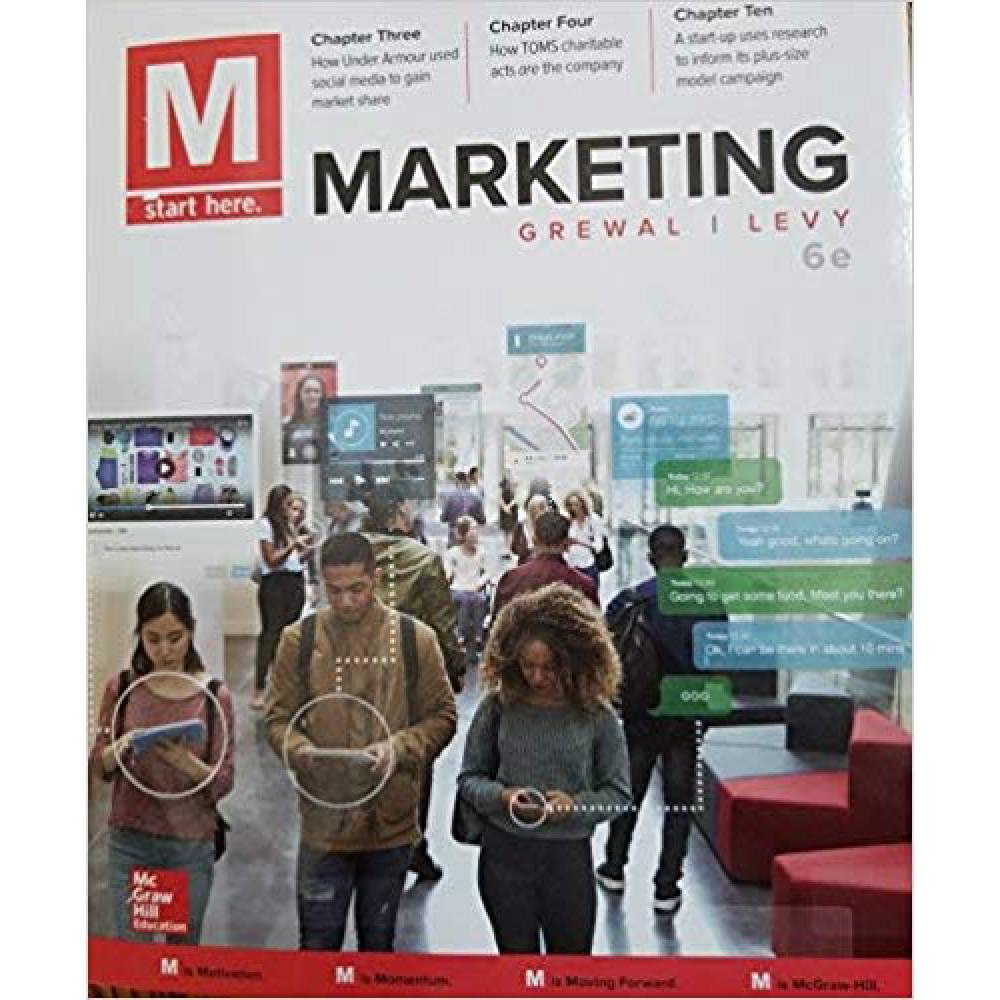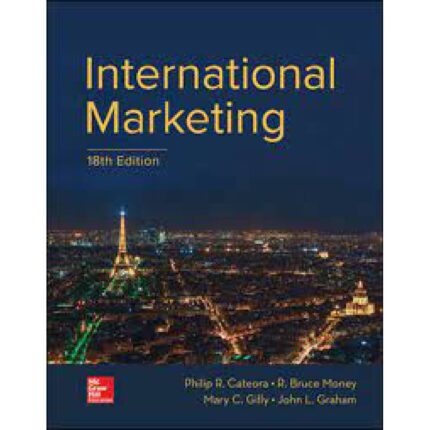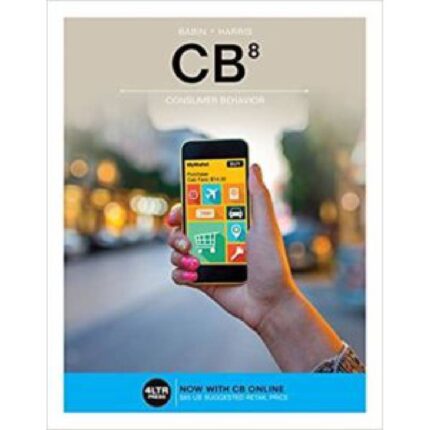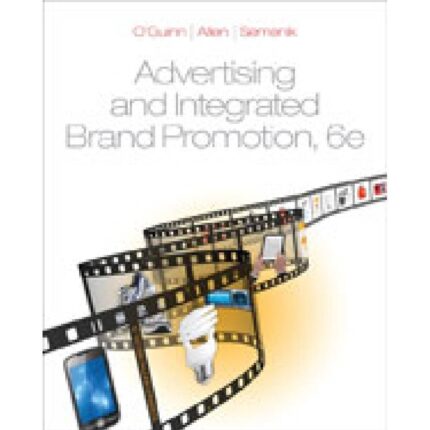M Marketing 6th Edition by Dhruv Grewal – Test Bank
Chapter 11 Product, Branding, and Packaging Decisions
1) A product is anything that is of value to a consumer and can be offered through a voluntary marketing exchange.
Answer: TRUE
Explanation: A product is anything that is of value to a consumer and can be offered through a voluntary marketing exchange. In addition to goods, such as soft drinks, or services, such as a stay in a hotel, products might be places, ideas, organizations, people, or communities that create value for consumers in their respective competitive marketing arenas.
Difficulty: 1 Easy
Topic: Components and Classifications of Products and Services
Learning Objective: 11-01 Describe the components of a product.
Bloom’s: Remember
AACSB: Analytical Thinking
Accessibility: Keyboard Navigation
2) Effective packaging and labels send consumers the signal “Buy me!”
Answer: TRUE
Explanation: Effective packaging and labeling can grab the consumer’s attention and encourage the consumer to buy.
Difficulty: 1 Easy
Topic: Packaging
Learning Objective: 11-01 Describe the components of a product.
Bloom’s: Remember
AACSB: Analytical Thinking
Accessibility: Keyboard Navigation
3) A company’s product line consists of its various product mixes.
Answer: FALSE
Explanation: Product lines are groups of associated items that consumers tend to use together or think of as part of a group of similar products or services.
Difficulty: 1 Easy
Topic: Product Line
Learning Objective: 11-03 Explain the difference between a product mix’s breadth and a product line’s depth.
Bloom’s: Understand
AACSB: Analytical Thinking
Accessibility: Keyboard Navigation
4) Brands enable customers to quickly differentiate one firm or product from another.
Answer: TRUE
Explanation: As consumers become familiar with brands, they can more quickly differentiate between various offerings.
Difficulty: 1 Easy
Topic: Branding Strategy
Learning Objective: 11-04 Identify the advantages that brands provide firms and consumers.
Bloom’s: Remember
AACSB: Analytical Thinking
Accessibility: Keyboard Navigation
5) Brand equity is calculated by subtracting sales of generic brands from the sales of branded items in a category.
Answer: FALSE
Explanation: Brand equity is the set of assets and liabilities linked to a brand that add to or subtract from the value provided by the product or service.
Difficulty: 2 Medium
Topic: Brand Equity
Learning Objective: 11-05 Explain the various components of brand equity.
Bloom’s: Understand
AACSB: Analytical Thinking
Accessibility: Keyboard Navigation
6) The more familiar customers are with a brand, the harder their decision-making process will be.
Answer: FALSE
Explanation: Familiarity with a brand makes the decision making easier, not harder.
Difficulty: 1 Easy
Topic: Branding Strategy
Learning Objective: 11-05 Explain the various components of brand equity.
Bloom’s: Remember
AACSB: Analytical Thinking
Accessibility: Keyboard Navigation
7) Harold is a loyal Coca-Cola customer. Loyal customers like Harold require lower marketing expenditures, benefiting businesses like Coca-Cola.
Answer: TRUE
Explanation: The costs of reaching loyal customers are lower, and their positive word of mouth reaches potential customers and reinforces the perceived value of current customers, all at no cost to the firm.
Difficulty: 2 Medium
Topic: Branding Strategy
Learning Objective: 11-05 Explain the various components of brand equity.
Bloom’s: Understand
AACSB: Analytical Thinking
Accessibility: Keyboard Navigation
8) Private-label brands are imitations often sold by street vendors.
Answer: FALSE
Explanation: Private-label brands are developed and marketed by a retailer and available only from that retailer. They are also referred to as store brands.
Difficulty: 1 Easy
Topic: Branding Strategy
Learning Objective: 11-06 Determine the various types of branding strategies used by firms.
Bloom’s: Remember
AACSB: Analytical Thinking
Accessibility: Keyboard Navigation
9) For a company like Pepsi, brand dilution occurs when it sells more product than the competition.
Answer: FALSE
Explanation: Brand dilution occurs when the brand extension adversely affects consumer perceptions about the attributes the core brand is believed to hold.
Difficulty: 2 Medium
Topic: Branding Strategy
Learning Objective: 11-07 Distinguish between brand extension and line extension.
Bloom’s: Understand
AACSB: Analytical Thinking
Accessibility: Keyboard Navigation
10) In entertainment licensing, the major risk to licensees is that the brand will become overexposed.
Answer: FALSE
Explanation: The licensee is the one using the brand name, logo, symbols, and/or characters. The major risk of brand equity dilution that comes with overexposure of the brand falls on the licensor.
Difficulty: 2 Medium
Topic: Branding Strategy
Learning Objective: 11-07 Distinguish between brand extension and line extension.
Bloom’s: Understand
AACSB: Analytical Thinking
Accessibility: Keyboard Navigation













Reviews
There are no reviews yet.